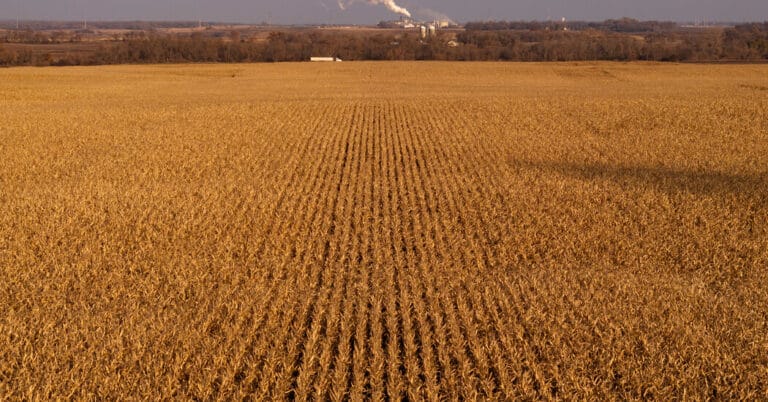The federal government provided millions of dollars in subsidies to large farmers to pay for much of the cost of their crop insurance policies last year, according to a Government Accountability Office report released on Monday.
The federal crop insurance program is intended to encourage farmers to protect their crops against natural disasters, extreme weather and other destructive events by purchasing private insurance that is heavily subsidized with taxpayer dollars.
Under the program, farmers can buy insurance policies to help cover financial losses from crop price declines and poor yields resulting from natural disasters. Private companies sell the policies, but the federal government covers much of the cost — paying on average about 62 percent of the premiums and subsidizing the insurers’ administrative expenses.
The cost of the federal crop insurance program ballooned last year, reaching $17.3 billion in 2022, according to Agriculture Department data. Roughly $3.7 billion of that amount was paid to insurance companies and agents that sell and service the policies. In 2021, the program cost the federal government roughly $9.4 billion, according to Agriculture Department data.
Unlike other farm programs that have income or payment limits, the crop insurance program does not have similar restrictions, so wealthy farmers can get millions in federal subsidies to cover the cost of their insurance, regardless of their income.
The report found that 19 policyholders with the largest subsidies each received more than $3 million in federal funds to help pay for their insurance last year. That included a nursery in the South that benefited from $7.7 million and a dairy farm in the West that received $6.6 million.
Last year, 1,341 policyholders, or about 0.3 percent of participants, were high income, meaning they had an average adjusted gross income of at least $900,000, the agency found.
Much of the funds are also paid to insurance companies that participate in the program, along with agents who sell and service the policies, the report found. From 2011 through 2022, the federal government paid insurance companies about $36.6 billion, or about one-third of the program’s total cost. That included subsidies for companies’ administrative expenses and their share of any financial gains associated with the policies.
Companies that participated in the program saw outsize returns, according to the report. From 2011 through 2022, companies received an average annual rate of return of 16.8 percent on retained premiums, surpassing the market-based rate of return of 10.2 percent. In some years, including in 2016 and 2017, the rate of return exceeded 30 percent. Companies saw just one year of losses during that period.
Senator Cory Booker, Democrat of New Jersey, who has pushed to overhaul the program, said the report showed a “shocking proportion” of the subsidies were being “eaten up by companies and agents who write policies for the very largest farms.”
“At the same time, the majority of small and diversified specialty crop farms, including many in my state of New Jersey, do not have crop insurance coverage,” Mr. Booker said in a statement. “This means that despite taxpayers spending over $1.5 billion each year to make sure farmers get good service and understand their options in the crop insurance program, the program is still failing small and diversified farms.”
Historically underserved farmers have participated in the federal program at lower rates. In 2022, about 7.5 percent of policyholders had self-certified as being historically underserved, according to the report.
Although the federal subsidies are meant to encourage more farmers to buy crop insurance, many smaller farmers still cannot afford to participate, said Scott Faber, the senior vice president of government affairs at the Environmental Working Group, a nonprofit advocacy organization. He added that the new report contained “staggeringly big numbers” that shed light on the program’s biggest beneficiaries.
“There ought to be reasonable limits on who can receive subsidies and the amount that they can receive,” Mr. Faber said, adding that he also wanted to see “reforms to how much we pay agents and how much profit we guarantee to insurance companies.”
Over the next 10 years, the program is projected to cost the federal government about $10.1 billion annually, according to estimates from the Congressional Budget Office.
The Government Accountability Office has long recommended changes to the insurance program that could save taxpayers billions of dollars over the next decade, the agency said in the new report. The office recommended that Congress reduce subsidy rates for high-income farmers and adjust compensation to insurance companies to better align with market rates.
For example, if subsidies for high-income policyholders had been reduced from 62 percent to 47 percent in 2022, the government could have saved about $15 million, according to the report. And if companies earned the market-based rate of return in 2021 and 2022, the government could have saved $1.5 billion.


